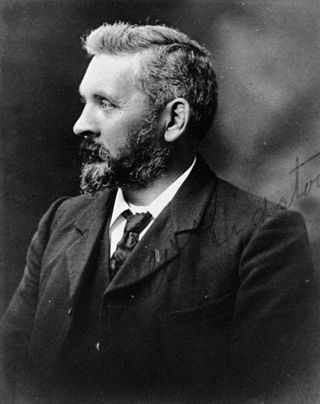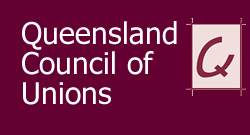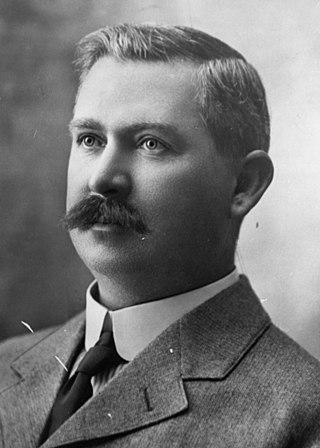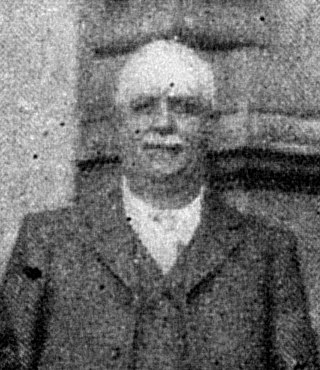
William Kidston was an Australian bookseller, politician and Premier of Queensland, from January 1906 to November 1907 and again from February 1908 to February 1911.
The Australian labour movement began in the early 19th century and since the late 19th century has included industrial and political wings. Trade unions in Australia may be organised on the basis of craft unionism, general unionism, or industrial unionism. Almost all unions in Australia are affiliated with the Australian Council of Trade Unions (ACTU), many of which have undergone a significant process of amalgamations, especially in the late 1980s and early 1990s. The leadership and membership of unions hold and have at other times held a wide range of political views, including communist, socialist and right-wing views.

William Guthrie Spence, was an Australian trade union leader and politician, played a leading role in the formation of both Australia's largest union, the Australian Workers' Union, and the Australian Labor Party.
The Australian Workers' Union (AWU) is one of Australia's largest and oldest trade unions. It traces its origins to unions founded in the pastoral and mining industries in the late 1880s and it currently has approximately 80,000 members. It has exercised an outsized influence on the Australian Trade Union movement and on the Australian Labor Party throughout its history.
The 1890 Australian maritime dispute was an industrial dispute that began on 15 August 1890 when the Mercantile Marine Officers' Association directed its members to give 24 hours notice to their employers after negotiations broke down with the Steamship Owners' Association of Victoria over longstanding pay and conditions claims. Industrial action quickly spread to seamen, wharf labourers, then gas stockers. Coal miners from Newcastle, Broken Hill, and even New Zealand were locked out after refusing to dig coal for non-union operated vessels. By September 1890, 28,500 workers were on strike.

The Queensland Council of Unions (QCU) is a representative, an advocacy group, or peak body, of Queensland trade union organisations, also known as a labour council, in the Queensland, Australia. As of 2020, 26 unions and 13 regional branches were affiliated with the QCU. The QCU represents unions covering around 350,000 Queensland workers. It is affiliated with the Australian Council of Trade Unions (ACTU). Its offices are located in the suburb of South Brisbane, Queensland. As a peak body for the Queensland trade unions, the objective of the QCU is to achieve industrial, social and political justice for Queensland workers. The management structure of the QCU is made up of a committee of management and an executive of representatives comprised from affiliated unions.

Emma Miller was an English-born Australian pioneer trade union organiser, suffragist, and key figure in organisations which led to the founding of the Australian Labor Party in Brisbane, Queensland, Australia.

The 1891 shearers' strike is one of Australia's earliest and most important industrial disputes.

The Tree of Knowledge was a heritage-listed tree in Oak Street, Barcaldine, Barcaldine Region, Queensland, Australia, that was poisoned and killed in 2006. It was a 200-year-old Corymbia aparrerinja ghost gum. It was added to the Queensland Heritage Register on 21 October 1992.

Thomas Joseph Ryan was an Australian politician who served as Premier of Queensland from 1915 to 1919, as leader of the state Labor Party. He resigned to enter federal politics, sitting in the House of Representatives for the federal Labor Party from 1919 until his premature death less than two years later.
John Alexander Salmon "Julian" Stuart was an Australian trade unionist, journalist, poet and politician.

Gilbert Stephen Casey was a trade unionist, agitator of the early Australian labour movement and a utopian socialist.
Errol Raymond Hodder, former Queensland branch secretary of the Australian Workers' Union (1982-1988), general secretary of the Australian Workers' Union (1987-1991) and retired Commissioner of the Australian Industrial Relations Commission (1991-2003) and of the Queensland Industrial Relations Commission (1997-2003).

After the 1890 Australian maritime dispute and the 1891 Australian shearers' strike both of which were long, drawn out affairs in which trade unions were defeated, running out of funds, actions by increasingly militant and desperate unions led up to perhaps the most violent shearers' strike, in 1894.

Thomas Joseph Ryan was a member of the Queensland Legislative Assembly in Australia. He represented the seat of Barcoo from 1892 to 1893.

William Halliwell Demaine was a newspaper editor, trade union official, and member of both the Queensland Legislative Council and the Queensland Legislative Assembly.
The labour movement or labor movement consists of two main wings: the trade union movement or labor union movement on the one hand, and the political labour movement on the other.

Slavery in Australia has existed in various forms from colonisation in 1788 to the present day. European settlement relied heavily on convicts, sent to Australia as punishment for crimes and forced into labour and often leased to private individuals. Many Aboriginal Australians were also forced into various forms of slavery and unfree labour from colonisation. Some Indigenous Australians performed unpaid labour until the 1970s.

Fallon House is a heritage-listed trade union office at 1 Maryborough Street, Bundaberg Central, Bundaberg, Bundaberg Region, Queensland, Australia. It was designed by David Ballinger Goodsir and Harold James Carlyle and built in 1953 by Llewellyn Herbert Edwards. It was added to the Queensland Heritage Register on 7 December 2012.

Shearers' Strike Camp Site is a heritage-listed campsite on the bank of Lagoon Creek, Barcaldine, Barcaldine Region, Queensland, Australia. It was built in 1891 by shearers on strike. It was added to the Queensland Heritage Register on 21 October 1992.















